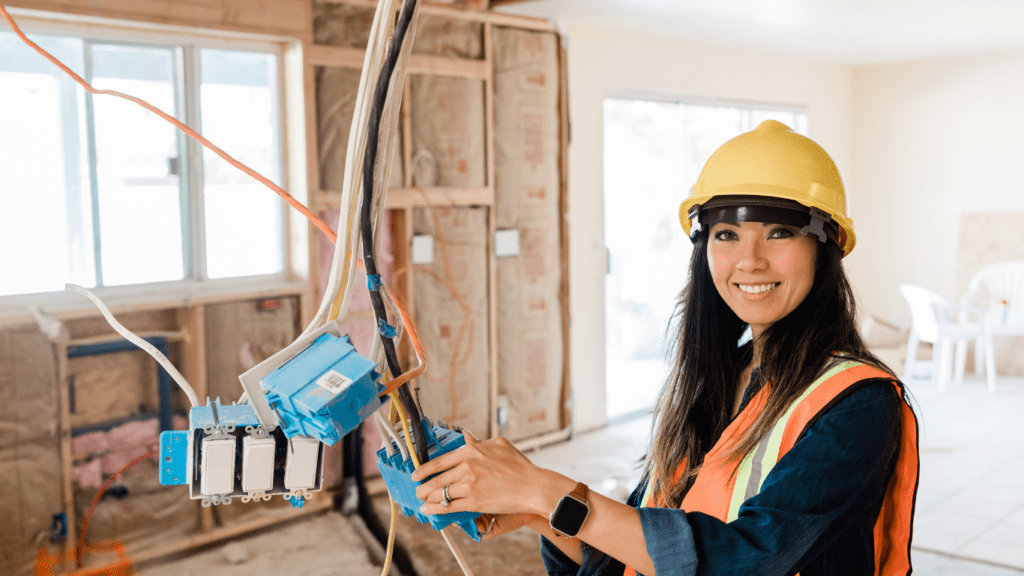Importance Of Home Renovation Safety
Ignoring home renovation safety can lead to severe injuries. Falls account for 35% of non-fatal home injuries, making them the most common risk. Besides physical harm, neglecting safety protocols can also lead to costly property damage. For instance, improper handling of electrical components can cause fires, while poor ventilation might result in mold growth.
Authorities like the Occupational Safety and Health Administration (OSHA) provide guidelines to prevent these incidents. Adhering to these safety standards not only protects health but also saves money on potential repairs. Additionally, insurance policies may not cover damages incurred due to negligence, leading to significant financial losses.
Using personal protective equipment (PPE) such as gloves, masks, and helmets minimizes risk. Tools and materials must be used correctly to avoid accidents. For example, using a ladder improperly can lead to falls, and mishandling power tools can cause severe injuries.
It’s crucial to educate everyone involved about safety measures. This includes understanding the proper use of tools and identifying potential hazards. Regularly inspecting the worksite for any dangers also helps in maintaining a safe environment. Safety should always be the priority in any renovation project.
Preparing For A Safe Renovation
A safe renovation starts with thorough preparation. By planning ahead, you can avoid many common risks and ensure a smooth project.
Planning And Permits
Planning is crucial before starting any renovation. Draw up detailed plans and identify materials, tools, and tasks. Check local building codes to determine permit requirements. Applying for necessary permits ensures compliance with regulations, preventing legal issues and fines.
Consult professional advice if unsure about any aspect of your renovation. For example, electricians can assess wiring needs, while contractors can identify structural concerns. Detailed planning covers all safety bases before beginning work.
Securing The Work Area
Securing the area prevents accidents and keeps everyone safe. Clearly mark renovation zones with tape or barriers. Keep pets and children away from these zones to reduce injury risk. Secure tools and materials when not in use. Locking up hazardous items like chemicals or sharp tools prevents unintended use.
Insist on proper lighting to avoid trips or falls. Remove debris regularly from the worksite. This also minimizes fire hazards. If the project involves high structures, ensure scaffoldings are stable and ladders meet safety standards.
Personal Safety Measures
When renovating, prioritizing your safety is essential. Personal safety measures can greatly reduce the risk of injury during your home renovation project.
Protective Gear
Wearing the right protective gear is crucial to staying safe. Always wear safety goggles to protect your eyes from debris and dust. Use ear protection if you’re working with loud tools, as prolonged exposure to loud noise can damage hearing. Sturdy gloves prevent cuts, scrapes, and chemical burns, while a dust mask or respirator is essential for avoiding inhalation of harmful particles. Always wear steel-toed boots to protect your feet from heavy falling objects and a hard hat if there’s any risk of head injury.
Proper Tool Usage
- Using tools correctly prevents accidents and ensures efficiency.
- Read the manufacturer’s manual for each tool to understand its operation.
- Inspect tools before use to ensure they’re in good condition.
- Always use the right tool for the job to avoid exerting excessive force, which can lead to slips and injuries.
- Secure tools when not in use to prevent accidental injuries and store them in a safe, organized manner.
- Unplug power tools when not in operation and never bypass safety features designed to protect you.
Safe Handling Of Materials

Handling materials safely during a home renovation is crucial. Employing the right techniques and having the proper knowledge can prevent injuries and ensure a smooth renovation process.
Hazardous Materials
Certain materials used in renovations pose significant health risks. Asbestos, for example, can cause severe respiratory issues if inhaled. Lead paint, often found in homes built before 1978, also presents poisoning risks, particularly to children. To manage these materials safely:
- Identify: Test for asbestos and lead before starting work.
- Contain: Seal off the area using plastic sheeting to prevent airborne particles.
- Wear Protective Gear: Use respirators, gloves, and protective clothing.
- Waste Management: Follow local regulations for disposal, using sealed containers for hazardous waste.
Waste Disposal
Proper disposal of renovation waste not only keeps the work area safe but also ensures compliance with local laws. Common waste materials include wood, metal, drywall, and hazardous substances. To handle waste effectively:
- Sort: Separate hazardous, recyclable, and non-recyclable materials.
- Recycle: Take metals, plastics, and cardboard to recycling centers.
- Hazardous Waste: Use approved containers and follow local guidelines for proper hazardous waste disposal.
- Regular Clean-Up: Maintain a clean worksite by removing debris daily.
Implementing these practices ensures a safer renovation environment, minimizing health hazards and legal issues.
Child And Pet Safety
Renovation projects can pose risks to children and pets. It’s crucial to take specific steps to ensure their safety.
Creating A Safe Environment
Setting up barriers, like baby gates or pet enclosures, keeps curious children and pets away from dangerous areas. Consider using visual signs or warnings. Store tools, sharp objects, and hazardous materials in locked cabinets or high shelves out of reach. Ensure that any cords or cables are secured to avoid tripping hazards. Try to maintain a clean workspace by regularly removing debris and disposing of waste properly.
Preventing Accidents
Supervision is key in preventing accidents. Never leave children or pets unattended near the renovation site. For extra safety, designate a separate play area for children and a rest area for pets, away from the work zone. If heavy machinery or toxic substances are involved, remove children and pets from the house temporarily to eliminate exposure risks. Ensure proper ventilation and use air purifiers to maintain air quality in adjacent rooms, safeguarding against dust and fumes that can harm young lungs and sensitive pets.
This structured approach emphasizes the importance of child and pet safety during renovations, ensuring readers are informed and prepared.
Electrical And Fire Safety
Electrical and fire safety are critical during home renovations, protecting your property and personal well-being.
Managing Electrical Work
Handling electrical work demands caution and expertise. Always turn off the power at the main breaker before starting any electrical project and use a voltage tester to confirm it’s off. Avoid overloading circuits by adhering to their amperage limits. For example, use a 20-amp circuit for kitchen outlets.
If uncertain about any aspect of electrical work, consult a licensed electrician. Improper installations can cause electrical fires, damaging both your home and safety. Never attempt DIY fixes; instead, follow all local building codes and National Electrical Code (NEC) standards to ensure compliance and safety.
Fire Prevention Techniques
Preventing fires involves multiple steps. First, store flammable materials like paint thinners and gasoline outdoors in well-ventilated areas. Use fire-resistant materials for structures and renovations where possible. Install smoke detectors on every floor and test them monthly to ensure they work.
Keep a fire extinguisher accessible in the work area, familiarizing yourself with its operation. When using power tools, keep workspaces free of flammable debris and clean dust regularly. Avoid smoking in the renovation zone; discarded cigarette butts can start fires. By following these precautions, you minimize fire risks during your home renovation project.



 Betsylie Sheetsin – Home Renovation Expert
Betsylie Sheetsin serves as the Home Renovation Expert at Castle Shelf House, specializing in giving practical advice for both small and large-scale home improvements. With years of experience in construction and renovation, Betsylie understands the importance of blending durability with design. Her insights into home renovation projects, along with expert advice on the latest materials and techniques, empower homeowners to tackle even the most ambitious projects confidently.
Betsylie Sheetsin – Home Renovation Expert
Betsylie Sheetsin serves as the Home Renovation Expert at Castle Shelf House, specializing in giving practical advice for both small and large-scale home improvements. With years of experience in construction and renovation, Betsylie understands the importance of blending durability with design. Her insights into home renovation projects, along with expert advice on the latest materials and techniques, empower homeowners to tackle even the most ambitious projects confidently.
